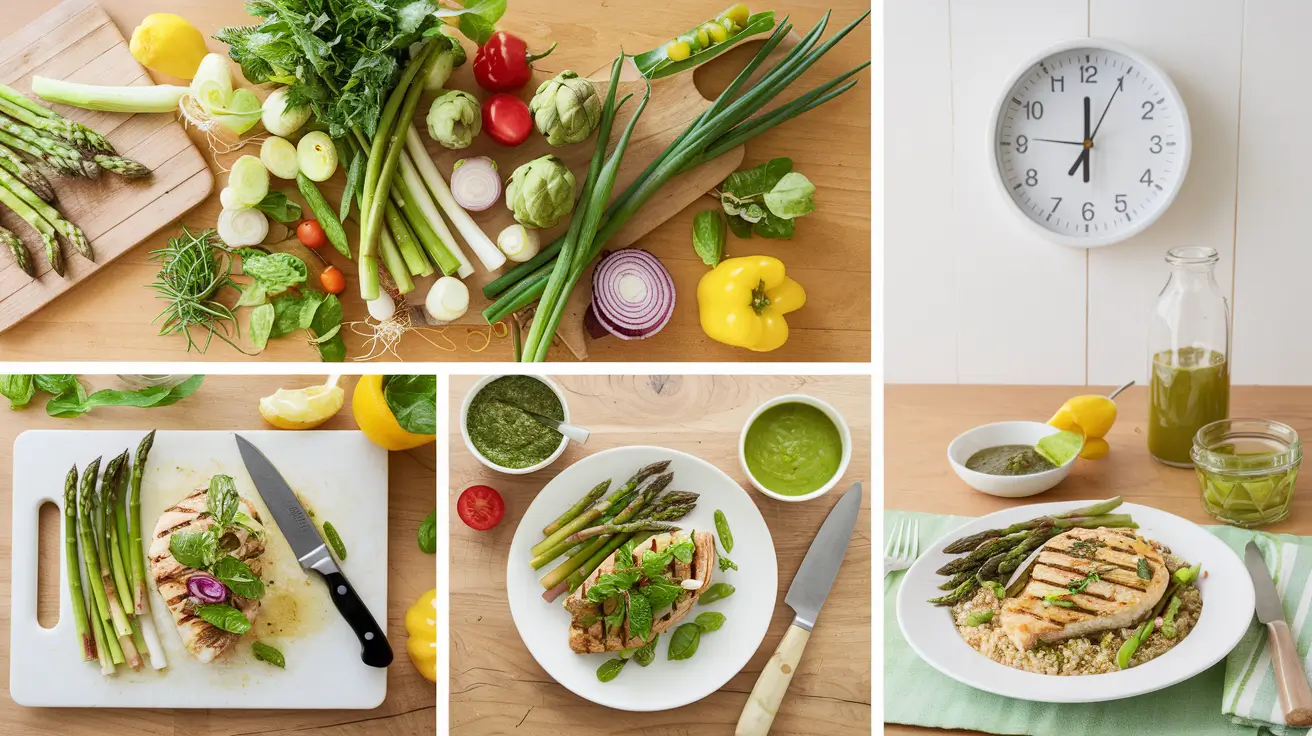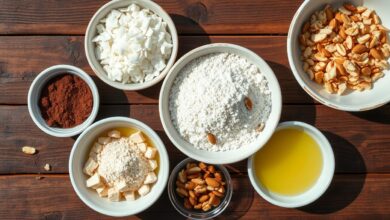Healthier Spring Dinners to Refresh Your Weeknight Menu

As the days grow longer and the weather warms up, it’s the perfect time to breathe new life into your weeknight dinner routine. Spring brings an abundance of fresh, seasonal ingredients that can help you create lighter, healthier meals without sacrificing flavor. In this article, we’ll explore a variety of delicious and nutritious spring dinner ideas that are perfect for busy weeknights, along with tips for incorporating seasonal produce and streamlining your meal prep process.
Table of Contents
- The Benefits of Seasonal Spring Eating
- 10 Healthy Spring Dinner Ideas
- Incorporating Seasonal Spring Produce
- Time-Saving Tips for Weeknight Cooking
- Meal Prep Strategies for Spring Dinners
- Balancing Nutrition in Spring Meals
- Adapting Family Favorites for Spring
- FAQs About Healthy Spring Dinners
The Benefits of Seasonal Spring Eating
Embracing seasonal spring ingredients in your weeknight dinners offers numerous advantages:
- Peak Nutrition: Spring produce is at its nutritional peak, providing maximum vitamins and minerals.
- Better Flavor: Seasonal ingredients are fresher and more flavorful, enhancing your meals naturally.
- Cost-Effective: Seasonal produce is often more affordable due to abundance and reduced transportation costs.
- Environmental Benefits: Eating seasonally reduces the carbon footprint associated with long-distance food transportation.
- Variety: Changing your menu with the seasons prevents meal fatigue and introduces new flavors to your diet.
10 Healthy Spring Dinner Ideas
Refresh your weeknight menu with these nutritious and delicious spring-inspired dinners:
- Lemon Herb Grilled Chicken with Asparagus and Quinoa
- Prep Time: 15 minutes
- Cook Time: 20 minutes
- Calories: Approximately 350 per serving
- Spring Vegetable Frittata with Mixed Greens
- Prep Time: 10 minutes
- Cook Time: 15 minutes
- Calories: Approximately 280 per serving
- Salmon and Pea Shoot Salad with Lemon Vinaigrette
- Prep Time: 15 minutes
- Cook Time: 10 minutes
- Calories: Approximately 320 per serving
- Springtime Minestrone Soup with Whole Grain Bread
- Prep Time: 20 minutes
- Cook Time: 30 minutes
- Calories: Approximately 250 per serving
- Grilled Lamb Skewers with Mint Yogurt Sauce and Roasted Vegetables
- Prep Time: 20 minutes (plus marinating time)
- Cook Time: 15 minutes
- Calories: Approximately 380 per serving
- Artichoke and Spinach Stuffed Chicken Breast
- Prep Time: 15 minutes
- Cook Time: 25 minutes
- Calories: Approximately 300 per serving
- Spring Pea and Mint Risotto
- Prep Time: 10 minutes
- Cook Time: 25 minutes
- Calories: Approximately 330 per serving
- Grilled Shrimp and Vegetable Skewers with Quinoa Tabbouleh
- Prep Time: 20 minutes
- Cook Time: 10 minutes
- Calories: Approximately 290 per serving
- Lemon Garlic Roasted Cod with Sautéed Spring Greens
- Prep Time: 10 minutes
- Cook Time: 15 minutes
- Calories: Approximately 270 per serving
- Spring Vegetable and Tofu Stir-Fry with Brown Rice
- Prep Time: 15 minutes
- Cook Time: 15 minutes
- Calories: Approximately 310 per serving
Incorporating Seasonal Spring Produce
Take advantage of these spring vegetables and herbs to elevate your weeknight dinners:
- Asparagus: Grill, roast, or add to pasta dishes and salads.
- Peas: Fresh or frozen, add to risottos, salads, or as a side dish.
- Artichokes: Steam whole or use hearts in dips, salads, or as a pizza topping.
- Spring Onions: Use raw in salads or grill for a sweet, caramelized flavor.
- Radishes: Add crunch to salads or roast for a milder flavor.
- Spinach and Other Spring Greens: Use in salads, sautés, or blend into pestos.
- Fresh Herbs (mint, basil, dill): Add to dressings, sauces, or as a garnish for an extra burst of flavor.
Time-Saving Tips for Weeknight Cooking
Streamline your spring dinner preparation with these efficient cooking strategies:
- One-Pan Meals: Create entire meals using a single sheet pan or skillet to minimize cleanup.
- Batch Cook Grains: Prepare quinoa, brown rice, or other grains in large batches to use throughout the week.
- Use a Slow Cooker or Instant Pot: Let these appliances do the work while you’re away during the day.
- Pre-Wash and Chop Vegetables: Prepare vegetables in advance for quick assembly during the week.
- Embrace No-Cook Meals: Utilize spring produce in salads or cold soups for effortless dinners.
Meal Prep Strategies for Spring Dinners
Effective meal prep can save time and ensure you have healthy dinners ready throughout the week:
- Plan Your Menu: Dedicate time each week to plan meals and create a shopping list.
- Prep Ingredients in Advance: Wash, chop, and store vegetables and herbs for easy use during the week.
- Cook in Batches: Prepare larger quantities of proteins or grains to use in multiple meals.
- Assemble Salad Jars: Layer salad ingredients in jars for grab-and-go meals.
- Freeze Portions: Cook extra servings and freeze for future quick meals.
Balancing Nutrition in Spring Meals
Ensure your spring dinners provide balanced nutrition by including:
- Lean Proteins: Choose grilled chicken, fish, lean beef, or plant-based options like tofu or legumes.
- Complex Carbohydrates: Incorporate whole grains like quinoa, brown rice, or whole wheat pasta.
- Healthy Fats: Add avocado, olive oil, or nuts in moderation.
- Variety of Vegetables: Aim to include a rainbow of colors to ensure a range of nutrients.
- Hydration: Many spring vegetables have high water content, contributing to hydration.
Adapting Family Favorites for Spring
Give your tried-and-true recipes a spring makeover:
- Lighten Up Pasta Dishes: Substitute heavy cream sauces with pestos made from spring herbs.
- Refresh Tacos: Use grilled fish instead of beef and top with a spring vegetable slaw.
- Spring-ify Pizza: Top with asparagus, artichokes, and fresh herbs instead of traditional toppings.
- Update Stir-Fries: Swap winter vegetables for spring peas, asparagus, and spring onions.
- Reimagine Salads: Create hearty dinner salads featuring spring produce and grilled proteins.
FAQs About Healthy Spring Dinners
- Q: How can I make sure my family gets enough protein in lighter spring meals?
A: Incorporate lean meats, fish, eggs, legumes, or tofu into your spring dishes. Even spring vegetables like peas and asparagus contribute some protein. - Q: Are frozen vegetables a good option if I can’t find fresh spring produce?
A: Yes, frozen vegetables are often frozen at peak freshness and can be a great alternative when fresh options aren’t available. - Q: How can I add more flavor to my spring dishes without adding calories?
A: Use fresh herbs, lemon zest, and spices to enhance flavors without adding significant calories. - Q: What are some quick and easy spring dinner ideas for extremely busy nights?
A: Try a spring vegetable frittata, a quick stir-fry with pre-cut vegetables, or a no-cook salad with rotisserie chicken. - Q: How can I get my kids to try new spring vegetables?
A: Involve them in meal planning and preparation, experiment with different cooking methods, and lead by example by enthusiastically trying new vegetables yourself.
By incorporating these spring dinner ideas, seasonal ingredients, and efficient cooking strategies into your weeknight routine, you can create nutritious and delicious meals that celebrate the freshness of the season. Remember, the key to sustaining healthy eating habits is finding a balance that works for your family’s tastes and schedule. Embrace the bounty of spring to refresh your menu and nourish your family with vibrant, wholesome meals.




